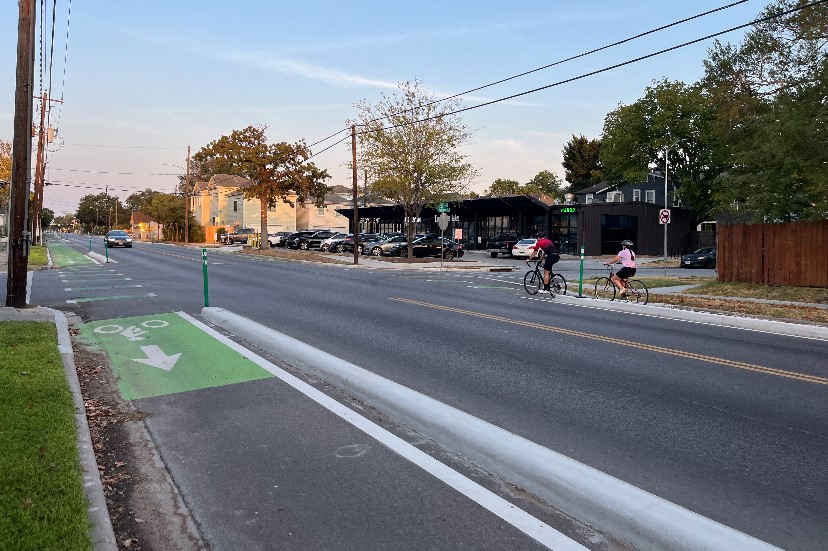Emmanuel Núñez
11th Street in the Houston Heights area became safer for everyone, including drivers, after traffic-calming measures and protected bike lanes were installed, according to a Houston Public Works (HPW) study published by Axios.
“I’d say it’s not surprising,” said Nicholas Ferenchak, an assistant professor of civil, construction and environmental engineering at the University of New Mexico. “We did a study of bus rapid transit system in Albuquerque … and we’re actually seeing the same thing. So, it’s not just protected bike lanes, but protected bus lanes as well — just kind of making these corridors more multimodal.”
Despite the apparent improvement and an award from the American Public Works Association, the $2.4 million 11th Street redesign could be reversed. Mayor John Whitmire announced a re-evaluation of multiple street projects in March, along with a deemphasizing of the “Vision Zero” traffic safety initiative. Ferenchak published research in 2019 finding that cities with higher rates of biking are safer for all road users, including drivers. His coauthor was Wesley Marshall, a professor of civil engineering at the University of Colorado Denver.
“I think one of the big findings was that it was the bicycling infrastructure that was sort of the biggest differentiator between the safer cities and the less safe cities,” Marshall said. “More specifically, it was the separated and protected bike infrastructure … it wasn’t just painted bike lanes, it was the better infrastructure that seemed to be one of the biggest differentiators.”
Arguing that the changes get in the way of first responders, Whitmire told ABC13 in March that all public works projects would be re-evaluated. He described Vision Zero as “critical,” but added that cyclists “need to do that on bike paths that are recreational and not try to compete with people going to work and school.”
The HPW study published by Axios found that overall travel times “do not appear to have increased significantly” because of the changes, with drivers experiencing less than 10 seconds of additional waiting time during the morning and evening rush hours at the Yale Street Intersection.
“I think there’s a lot of biases that come from behind the windshield, especially when you look at bike lanes or bus lanes,” Marshall said. “The way those operate, they’re gonna seem empty to someone who’s sitting in traffic congestion … you’re going to look over at a bike lane or a bus lane and think, ‘Oh, no one’s using that. I should be over there.’ The math doesn’t support that if you’re actually counting people instead of cars.”
According to the HPW study, the total combined pedestrian and cyclist crossings along 11th Street across Heights Boulevard increased from 87 in 2019 to 324 in 2024. Traffic accidents decreased by 36%, from 25 in 2019 to 16 in 2023, and the “annualized cost to society” due to crashes along the entire project decreased from $2,905,600 in 2019 to $536,800 in 2023, representing an “annual, ongoing benefit” of $2,368,800.
The mayor’s office did not immediately respond to a request for comment.

